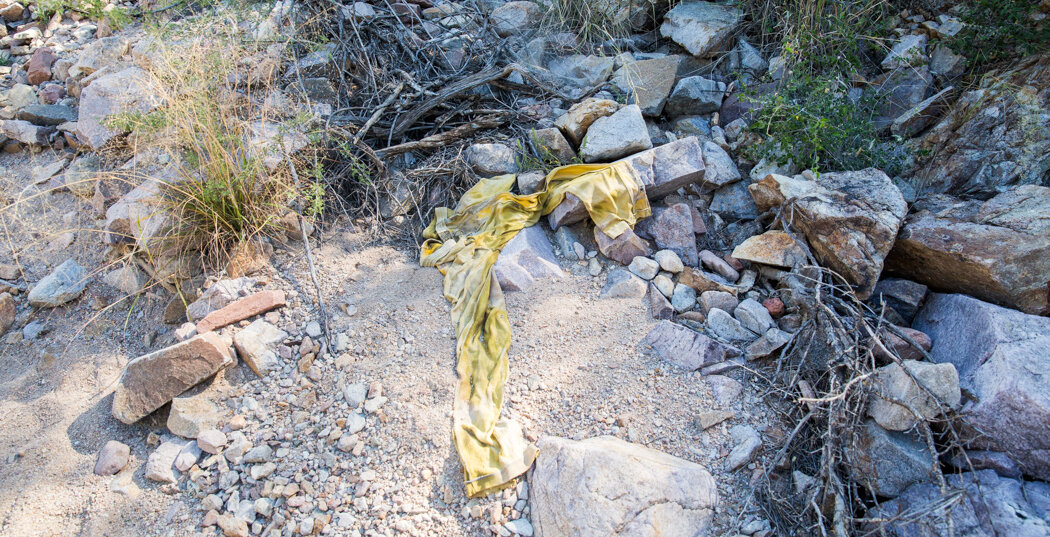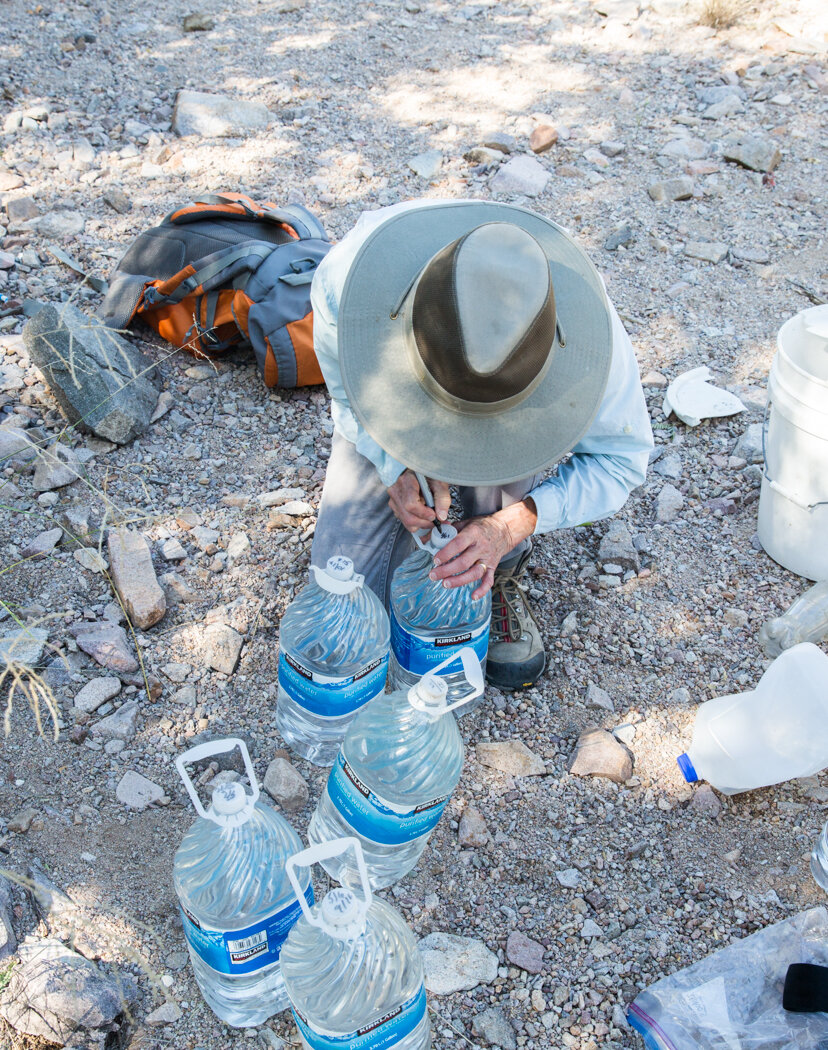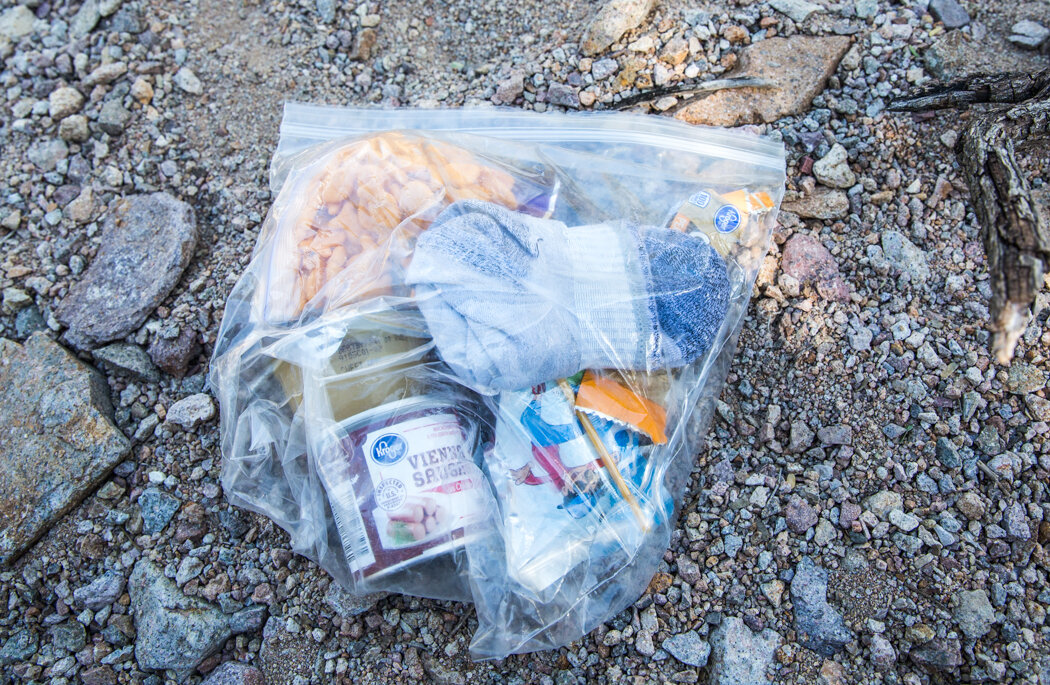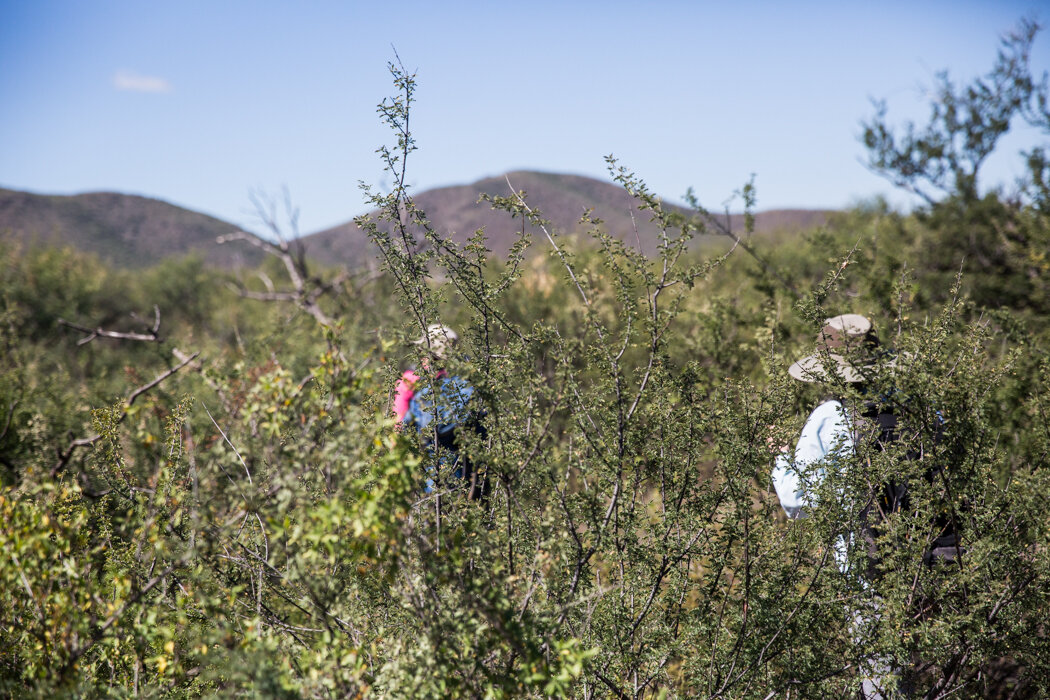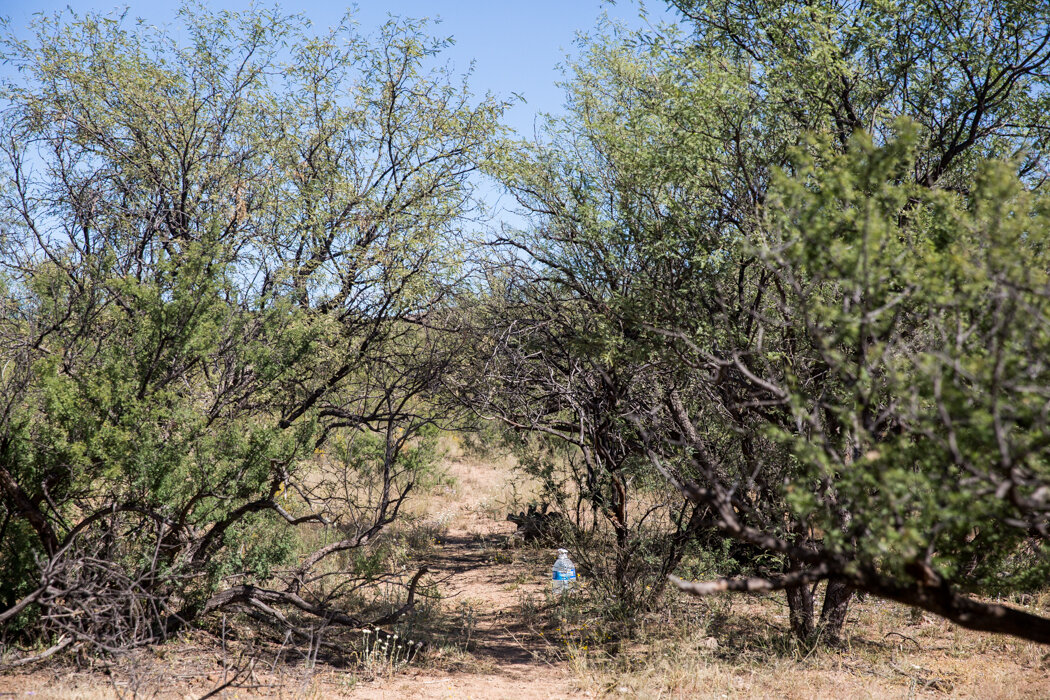So, I’m doing a pretty terrible job editing the photos for this blog. I want them all to be in here so you can experience this trip in real time, but I realize that anything real time including time itself can be torture. The photos aren’t, like, super amazing, but again it’s that thing of every time I find something I want to document it because it’s a trace of a person that moved through that space. And it’s banal but it’s also haunting. These photos are from a Tucson Samaritans water drop which I did last Monday and this Monday (two days ago) I went on another water drop with them which was a little different from filling the water tanks with Humane Borders. Tucson Samaritans works with maps of migrant trails and finds spots along the trail to drop water off which means some hikes with gallons of water - I’ve learned that each gallon of water is 8 lbs- carrying 2 gallons in a backpack makes me tired. We each carry at least 2 gallons, some people, like Bob- wild man- carry 3 in the pack and one in his hand. Bob also doesn’t wear sunscreen and barely drinks any water. He is also an avid bike rider and rides his bike, I think daily, even in the heat. EVEN IN THE HEAT OF SUMMER. I can’t imagine doing anything here in the heat of summer because summer is over, it’s perfectly pleasant upper 80’s and I still want to die most of the time. The sun, it feels like it bores holes into my skull. The sun, it is a killer.
The desert is such a strange place- that super bright sun, the heat, it makes you see things, it makes you hear things.
Sometimes we find these brown jugs that migrants bring with them from Mexico, the color is supposed to be less reflective than the regular white and clear jugs thus making them less easily able to be spotted by border patrol.
We found this jug on the path, pretty far away from the other jugs and not one of ours - it reads ‘Fuerzas amigo!’ which means, I think, ‘have strength, friend!’ which made me pause when I first saw it and makes me cry when I write it. There was also writing on the other side which said “Dios esta contigo”, God is with you. Little notes left for others following the same path meant to give courage.
Our hike into the canyon to fill the water jugs, it was about a mile and pretty level, which was fine in moderate heat- but, again, I have a difficult time imagining any of this activity in the summer. And I say it was fine, but it still wasn’t a walk in the park while carrying 16 lbs of water on my back- and that really doesn’t sound like a lot, but it is. And it’s what everyone should carry with them for one day in the desert. It’s heavy as hell. I can’t imagine carrying a child with you on this journey. Also, our path was fairly straightforward, with relatively few ups and downs, but apparently the migrant path which leads to the water drop location we were hiking to is less straightforward and goes up and over the hills leading into the canyon.
Water bottle. I asked if we should pick up the trash, but Bob’s answer was as I suspected, the debris lets others know they’re on the right path. So we left most things we saw along the way.
It’s always…sad seems too shallow a word- unnerving- to find clothing along the trail. These seemed to be a pair of sweatpants belonging to a woman- at least it seemed like they belong to a woman. Yellow and fun.
Piece of can. Lots of cans along the trail. I think these are the kind of pieces Alvaro uses to embellish his crosses.
Bob!
We’ve arrived at our water drop. Linda is checking how many gallons of water were taken, how many had animal damage, and determining how many to leave. In this case because the hike was a mile, no one wanted to hike back out with water, so we left every thing we had. Bob is examining a food bucket we leave in the branches filled with snack/sock packets for migrants- leaving it in the tree is to keep it safe from animals.
Another water jug left at the site, a sign to the next group that Juan made it that far. A smiley face of encouragement.
Linda marks the jugs with the location number and date so we can keep track of what’s been used and when the last drop happened.
Marked water jugs- this type of water bottle is impossible and annoying to carry for long distances or any distances because of the handle. But those traditional milk jugs seem to have a thinner plastic that’s easier for birds and other animals to destroy and get to first before any migrants have the chance. Also, I asked if migrants were ever afraid to drink the water, if they feared it would be poisoned, because I think that’s what I might suspect in this inhospitable land. The answer was yes. Having them sealed helps to allay some fears.
A sample of the food/sock packet we left in the buckets. It seems that socks are often discarded, it’s not clear why. In addition to the socks, there’s a bag of goldfish, vienna sausages, apple sauce, granola bar, and a juice.
Food bucket hung from a tree.
Discarded socks. Adult socks, child socks - or socks for a very short person.
Still life with water jugs, food bucket, and discarded socks.
Another shirt we found on the trail, it looks like someone’s party shirt. Who knows if this is even true, maybe it was shirt they hated for a long time and were happy for the opportunity to unload it. It’s easy to put a grim reading into all the things found along the way. The journey is grim and one of desperation but there must be bright spots and- my personal favorite- gallows humor along the way?
Scrambling through the narrow rock path.
The grasses, bushes, are so tall and overgrown it’d be easy to lose your group along the way. And difficult to figure out where you are once you do.
We found very clean bones! Someone had a feast, there was a whole pile of them next to this one.
Hey guys, wait up.
Just the landscape which is both beautiful and harsh.
At the next drop the jugs had their tops sliced. This was done by assholes- rednecks, hunters, redneck hunters, or vigilantes. They slice the tops and leave the jugs to show they were there.
Oh, hey Linda.
Recording the water drops in the log book back in the car. An inexact science based on what we can remember.
More still life with water. How this space is transformed. It looks wild and untouched until you look closer and notice the displaced artifacts waiting for more people to pass through and scattered with the those that’ve been left behind. Near one of the water drops were some rocky outcroppings that Bob said an independent group of engineers and other nerds claimed as an area that might have gold - hobby gold miners- which is not a rare occurrence in this area of Arizona, apparently-- it makes me wonder about how this land witnesses all the different kinds of people using it and passing through it on a given day. Each group - maybe purposefully- oblivious of the others, some brave with an inherent entitlement, some hiding from anything that makes a sound.
Bob! Apparently it’s hunting season and I keep wearing neutral colored clothing, thankfully Bob has a red shirt- so I guess we know if a redneck hunter gets him, it was on purpose.
Blurry Bob- I do love this picture.
Ocatillos are so odd and angular and when they’re all together, striking. All the desert vegetation is sculptural.
More found clothing- appears dropped carelessly, hurriedly, flung.
Unattached buttons. Of all the pieces we found, these scattered buttons caused Linda to pause.
A faint path.
Ocatillos!
Bob takes a school group out once a month- usually they’re private schools or Christian schools- from California, Colorado, and Arizona. They visit the border and migrant paths so they can see the devastation of these desperate journeys. And no good immigration policy.
A blanket provided by Tucson Samaritans that’s been used and left behind.
More clothing.
Still life with water bottle.





